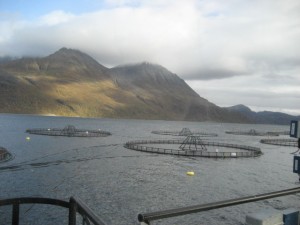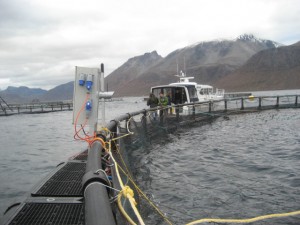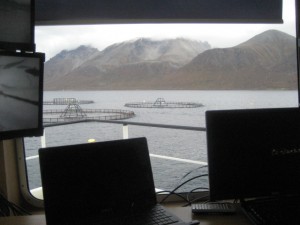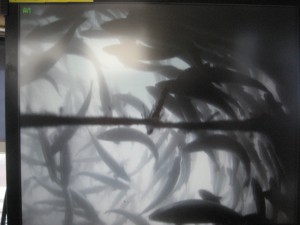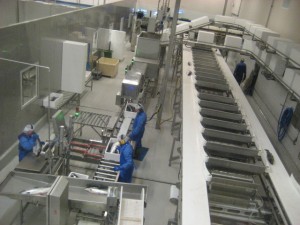My quick visit to a salmon farm in Norway: a brief report
I’m just back from a trip sponsored by the Norwegian Seafood Council, whose job it is to promote sales of farmed fish from Norway. The Council takes great pride in the quality of Norwegian fish farming.
I wrote about the dilemmas of fish farming in What to Eat, but I had never been to one. I went because I wanted to see a fish farm for myself, and this one was about 400 miles north of the Arctic Circle, near Tromsø.
The principal argument for fish farming is that wild fish are being fished out and will soon disappear. As the argument goes, if we want fish, farming is how we will have to get them (there is also a pro-farming argument about omega-3 fatty acids, but let’s not go there right now).
Before I left on this trip, I was sent a letter from an anti-farming advocate detailing all of the arguments against fish farming. This is worth a read (or see the Fish Farming Dilemma chapter in What to Eat).
We were taken to see a farm with 12 nets:
We went out to one of the nets to have a look.
This farm is managed from a control room on a boat, and monitored by computers that measure water conditions, currents, feed, and other factors.
A camera is placed in the nets about half way down looking up at the fish. This monitors the amount of feed. If the camera sees feed, it’s time to stop.
We were taken to the plant where the fish are harvested.
This particular plant produces salmon for the Japanese sushi and sashimi markets. It was pristine. The fish are harvested under conditions that ought to satisfy any humane society.
Overall, we saw none of the disease and pollution problems that I had expected to see. Norway tightly regulates fish farming in quantity and quality. The farms looked well managed, and the fish looked healthy. The farm tests extensively for contaminating heavy metals and pathogens, reports no lice, and vaccinates young fish against disease.
The fresh salmon looked pink (because they are fed dye), streaked with fat (they are well fed), and had a nice light taste, but one quite different from that of wild Alaskan salmon.
The one set of questions left unanswered had to do with what the salmon are fed (we asked for and have been promised this information).
I came home with a handful of salmon feed pellets. They look like dog food but feel greasy and smell fishy.
Therein lies the dilemma. To get salmon or any other farmed fish to taste like fish, it is necessary to supplement their corn and soybean rations with fish meal and fish oil obtained from wild fish stocks, thereby further depleting ocean fish.
If we must have fish farming, it looked to me as though Norway was doing it well. Elsewhere? I have no idea.
Should we have fish farming? I see it as a dilemma.
As always, I await your thoughts.
Addition, October 5: Elyssa Altman, writer of the blog, PoorMansFeast.com, was also on this trip. Her report of it is more detailed than mine and addresses many of the questions asked in the comments.

